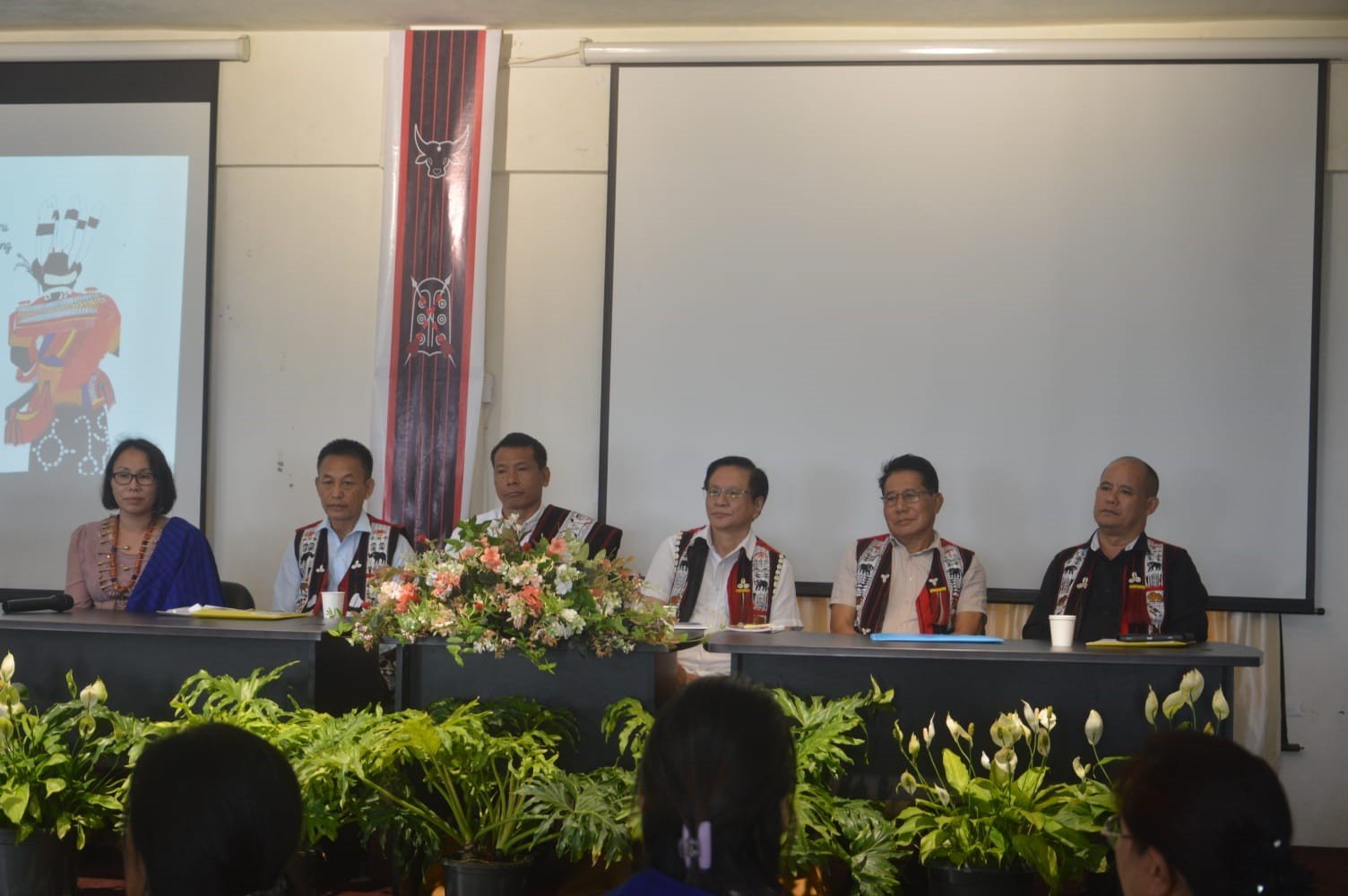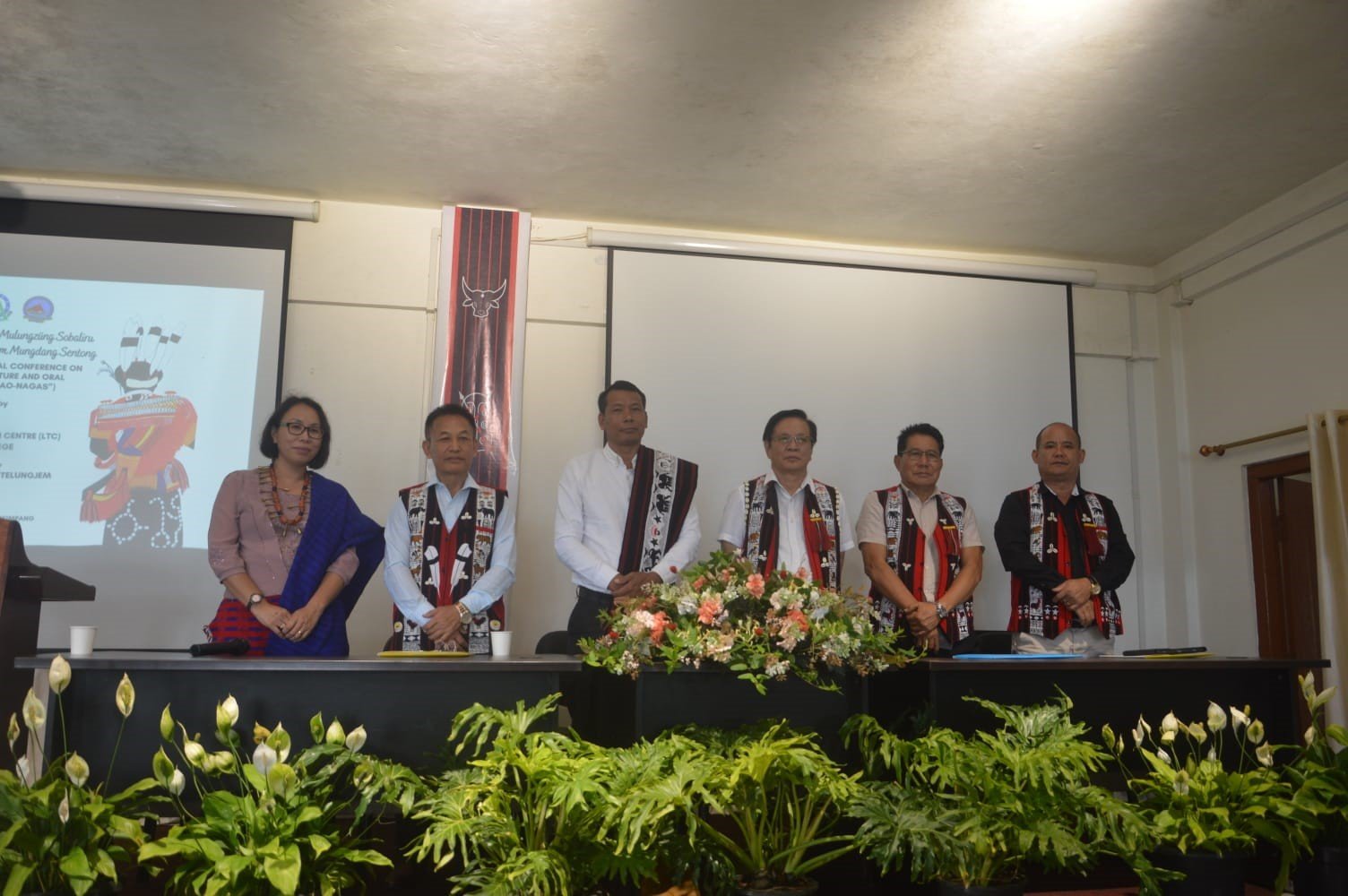On July 31, an international conference on “Language, Literature, and Oral Tradition of the Ao-Nagas” was held at Fazl Ali College (FAC), organized by Ao Riju (Ao Academy) and the Language Translation Centre (LTC). The conference, sponsored by the Kohima Aor Pensioner Telungjem (KAPT), took place in the FAC Conference Hall.
Dr. Watijungshi, President of the Kohima Aor Pensioners Telongjem, highlighted the vulnerability of the Ao-Naga language, one of 191 vulnerable languages in India. He praised the organizers for their efforts in preserving Ao-Naga culture and urged scholars to continue their preservation efforts. He reaffirmed KAPT’s commitment to supporting these initiatives and emphasized the importance of cultural pride and the role of the conference in ensuring the future of the Ao-Naga language and traditions.
Marsanen Imsong, President of Ao Senden, emphasized that the Ao Senden is dedicated to all Ao people and the preservation of the Ao language. He described Ao Riju as the most prestigious property of the Ao Senden and stressed the importance of focusing on the script, grammar, and vocal aspects to develop the Ao language scientifically. He called for new ideas to help the language grow and expressed hope for the success of the conference.

The keynote address on “Naga Culture and Language: Synthesizing New Research” was delivered by Dr. Roger Blench from the McDonald Institute for Archaeological Research, University of Cambridge. Dr. Blench focused on synthesizing new research on Naga culture and language, noting that Naga languages form a subgroup of Trans-Himalayan languages spoken in India, Bangladesh, and Myanmar. He highlighted the improvement in language documentation due to contributions from students, particularly in Nagaland.
Dr. Blench stressed the need for expanded research to recover threatened languages, unify scholarship beyond India’s borders, and conduct comparative studies on Naga material and immaterial culture. The importance of preserving architectural heritage, which is under threat was also emphasized. He called on the audience and their students to engage in research and preservation efforts to safeguard Naga languages and culture.
Download Nagaland Tribune app on Google Play

In his address, Dr. Blench provided a detailed overview of Naga linguistic subgrouping, mentioning key texts and scholars such as Brown (1851), Damant (1880), Marrison (1967), French (1983), Lamthang (2001), Van Driem (2007), Button (2011), Mortensen & Miller (2013), Bruhn (2014), and Petersen (2017). He discussed the complexities of Naga languages and the common cultural features that bind Naga societies, including social structure, houses, musical instruments, weaving, ornaments, and figurative art.
Dr. Blench highlighted particular elements of Naga material culture, such as A-frame houses, slit gongs, and figurative art. He emphasized the cultural significance of the mithun in Naga culture and the need to promote it due to its low environmental impact. He concluded by acknowledging the exponential growth in Naga research over the past decade and called for continued efforts to recover threatened languages and protect Naga architectural heritage.

Dr. Blench thanked the organizers for the invitation to speak and acknowledged the contributions of various scholars and institutions to the preservation and study of Naga culture and language.
The conference also featured panel discussions and research presentations in both Ao-Chungli and English. The inaugural session was chaired by Prof. Pangersenla Walling, Department of Linguistics, NU, and Head of Language Division, Ao Riju. The invocation was pronounced by Rev. Dr. Prof. Mar Pongener, Executive Secretary, ABAM. Limawati Longchar, Executive Member of Ao Riju, welcomed the attendees both physically and online.

